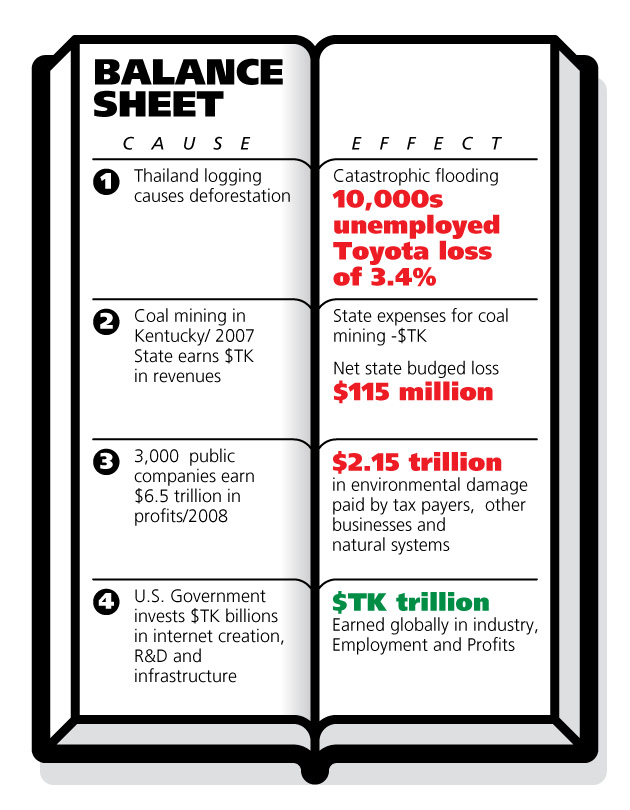Let’s Talk About Environmental Debt
First published in the Huffington Post, March 15, 2013
As the country begins to feel the consequences of the new federal budget cuts, we must realize that all money is not created equal. The sad state of affairs is that neither the Obama administration nor the Congress seems willing to actually tell the truth about our federal budget. Today, one of our biggest financial burdens is environmental debt. In the near future, it will become the centerpiece of our financial troubles.
In 2011, a Harvard study showed that in just the United States, the full costs of coal extraction and combustion on top of the coal companies’ costs were between $350 – 500 billion a year. These hundreds of billions of dollars, called externalities in economics, represent actual bills paid by local and federal government, fisheries, businesses, schools, and unwitting families and their healthcare providers. Despite conventional wisdom, coal is not a cheap energy. Its price is cheap only because it is subsidized by its own victims. Two similar studies estimate the externalities of oil in the United States at over $800 billion annually.
Add together the external costs of coal and oil, and it is well over $1.1 trillion, the annual 2012 United States deficit and the trigger for the sequester. Clearly, environmental debt is already a serious contributor to fiscal instability. And it is never even debated by Congress.
Would you rather federal, state and local governments spend our money on preventing extreme weather in the future or on recovering from extreme weather? This is not a rhetorical question. This is the real financial equation that has to enter all decisions on public budgets. The sequester’s across-the-board cuts treat all government expenditures with the same

